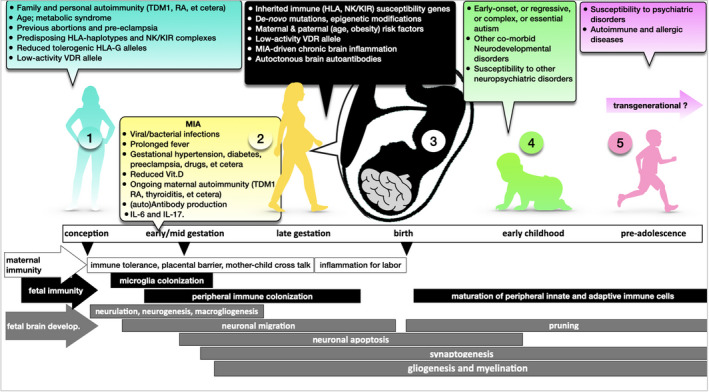Figure 1.

Multistep immunological road to autism is as follows: the first step (1) starts from the maternal immunogenetic predisposition to MIA (KIR/HLA), familial and personal autoimmunity and epigenetic forces such as age and gestational metabolic syndrome; the second step (2) takes place at the intrauterine level where pathogens and other events can trigger a detrimental immune activation at the maternal–foetal interface; and the third crucial step (3) takes place at the brain foetal level, at a crossroad between foetal immune and non‐immune genetic susceptibility, chronic microglial activation and persistent maternal immune activation. As a result of the complex interaction of different risk factors and depending on several variables, (3) and (4), offspring may present with various clinical forms of ASD (early onset, complex, regressive and essential). The same immune and structural brain alterations may predispose a toddler, or even an adolescent (5), to a late onset of neuropsychiatric illnesses. The transgenerational effect of the previous multistep process is, in humans, only hypothesised. TDM1 = type 1 diabetes mellitus; RA = rheumatoid arthritis; NK/KIR = NK/killer cell immunoglobulin‐like receptor; VDR = vitamin D receptor; MIA = maternal immune activation; Vit.D = vitamin D; IL = interleukin.
